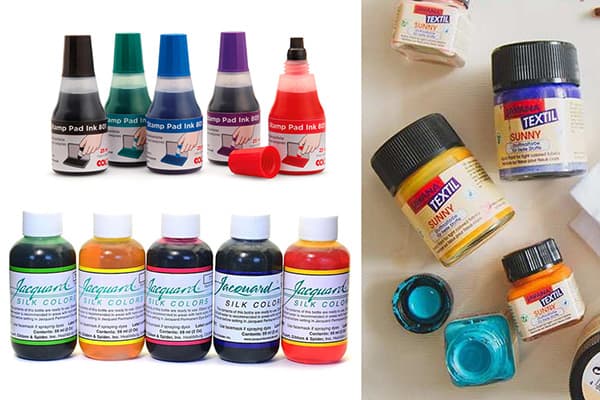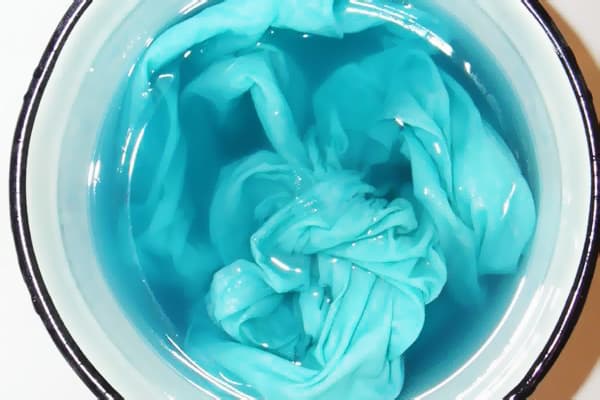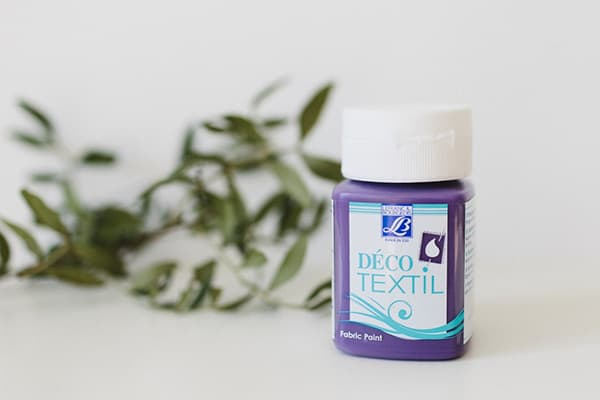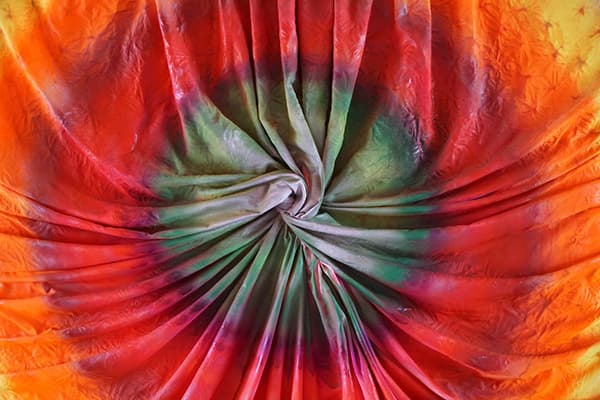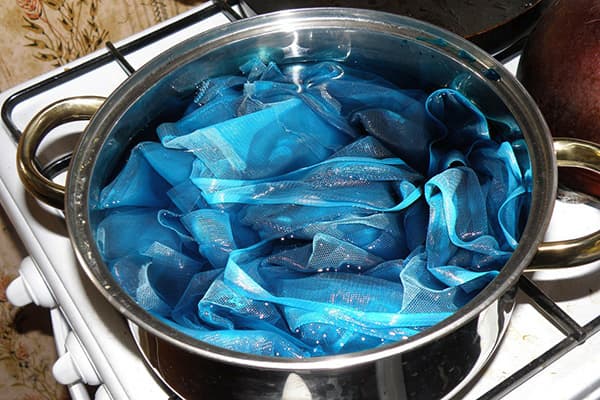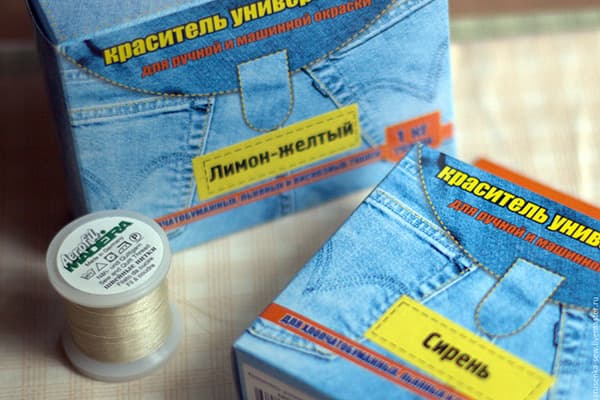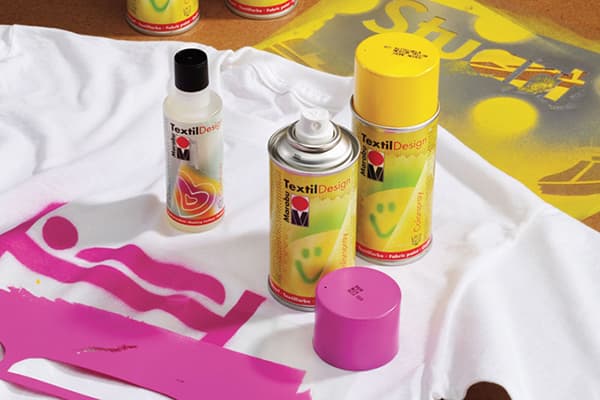How to choose a good paint for the fabric and properly dye the garment?
Content:
Fabric paint is a magical tool in the hands of a creative person. With its help, you can not only return the faded thing to its former appearance, but also get a new color, decorate your clothes with bright drawings, custom prints. We will show you how to choose a good paint and properly process the fabric.
How to choose?
When you go to a creative goods store or a business department, your eyes run up from a variety of fabric colors. Different manufacturers, prices, release forms, composition. Which dye to choose?
- Examine the type of fabric on the product packaging. Not all dyes are suitable for dyeing synthetics, silk, outerwear made of PVC materials.
- For full and uniform coloring of products, choose aniline paints, and for spot painting and drawing drawings, prints - acrylic.
- Give preference to well-known, time-tested brands: Javana, Dylon, Marabu, Jacquard, Simplicol, Elbesoie. Good brands of paints for home-made clothes are Batik and Gamma.
Types of paints
Now in more detail we will talk about two main types of dyes - aniline and acrylic.
Aniline
Available in the form of powders and liquids. Used in pure or diluted form. The main advantage of aniline paint is that its pigments penetrate deep into the fabric and completely impregnate the fibers. The painted product retains elasticity, softness, does not deform. Indelible paint, the color remains even after many washings. It can be used to dye clothes in the washing machine.
The disadvantages of aniline dyes:
- to consolidate the result after staining, a rather complicated steaming procedure is necessary (the product is neatly fixed over the tank with water vapor);
- such paints are not suitable for applying small drawings - the latter will turn into blurry spots.
If you do not have the opportunity to steam at home, then you can lower the painted thing into a basin with a weak vinegar solution (1 glass per liter of water).
If you want to color your trousers or jeans, use black aniline paint. It will preserve the structure of the fabric and will not lead to shrinkage of things.
Acrylic
Unlike aniline, acrylic dyes do not impregnate fabric fibers, but cover them with a colored coating. In the stained area, the fabric becomes stiffer. Funds are available in the form of jars with a liquid solution (pigments + emulsion), tubes and aerosols.
Advantages of acrylic paints:
- good solubility in water;
- the possibility of spot drawing, drawing parts;
- getting new interesting shades when mixing colors;
- To consolidate the result, it is enough to iron the dried fabric with the iron from the wrong side.
Although aniline paint dissolves well in water, do not overdo it. When diluted in a large amount of liquid, the product loses its stability. If you want to get a light shade, use special solvents (often come in the same kit with dye).
Thus, one cannot say for sure which paint is better: aniline or acrylic. The choice should depend on what goal you pursue when painting things: restoration or decoration.
Useful fabric dyeing tips
Whatever clothing dye you choose, it is important to follow certain rules. Otherwise, you can get an unpredictable result or ruin a thing.
5 main rules:
- Wash clothes before painting (even black paint does not remove old stains from the fabric). But to dry a thing is not necessary.
- When working with dye, use thin rubber gloves.
- Remove or tape the entire hardware.
- Do not stain fabrics with a synthetic fiber content of more than 60%. Such things absorb paint very poorly and quickly fade. Entrust the work to professionals.
- Only handle damp cloth.
Please note that after staining, the thing will give the paint in water for some time (usually 3-4 washings). Therefore, wash it separately from other things.
How to color a thing?
Typically, the dye is accompanied by detailed instructions on how to dye the fabric. Each method of staining has its own sequence of actions.
Manual way
The easiest way is to dye a piece of clothing with an aerosol. To do this, shake the can well and spray it at a distance of 15-20 centimeters from the surface of the fabric for several seconds. The longer you hold the button, the brighter the final color.
It is more difficult to paint a thing completely with liquid or powder paint. Sometimes boiling is required for this (see instructions).
General procedure:
- Dissolve the paint in a metal container with water in accordance with the indicated dosage.
- Immerse the clothes in liquid for 30-40 minutes. Straighten the folds. Periodically turn the product over with a large metal spoon so that the surface is evenly painted. The longer the clothes are in the coloring solution, the more intense the color.
- At the end, rinse the item in a weak solution of vinegar (1 cup per liter of water).
To fix the color, at the very beginning 2 tablespoons of salt can be added to the water with the product. And 2 teaspoons of soda will soften the water, which will make the dyeing safe for cotton fabric.
Machine wash machine
First, check on the packaging of the product whether it is suitable for coloring things in the washing machine. If so, get to work.
- Put the item (only one) in the flattened drum. Pour a tablespoon of soda. This will help soften the water.
- Set the temperature to 30-40 degrees and turn on the device.
- Dilute the paint with water in the ratio specified in the instructions. Add the detergent into the hole for the washing powder at the moment when the machine finishes collecting water.
If after dyeing the clothes will have an uneven color, stains, then put it back in the drum. Turn on rinse and spin. So the paint will spread over the entire surface.
Conclusion
To work with paint for clothes is not difficult. It is enough to choose a tool for a specific tissue and purpose, read the instructions and do everything carefully. Now you can easily turn old things into fashionable new things.
